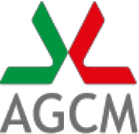THE TELEVISION INDUSTRY
PRESS RELEASE
PRESS RELEASE
THE COMPETITION AUTHORITY HAS CONCLUDED ITS FACT-FINDING INVESTIGATION INTO THE SALE OF TELEVISION COMMERCIALS
At its meeting on 16 November 2004, the Competition Authority resolved to conclude the fact-finding investigation that began on 29 May 2003, pursuant to section 12 of the Competition Act, into the television industry and specifically into the television commercials market.
The survey revealed that the national advertising market, and the television commercials market in particular, was highly concentrated and that there were major entry barriers, mainly due to structural factors which hampered the sound operation of the market.
Whereas the market for advertisements in the daily and periodical press, and on the radio had a fairly competitive structure, the television commercials market - whose main feature is that it is composed of television groups that provide programmes for their viewers and at the same time broadcast advertisements of their customers - is highly concentrated, to a degree without parallel in any other European country, due to the dominant position of the Fininvest group which holds a 65% share of the advertising market, and the RAI public broadcasting corporation which has practically all the remaining market share, of 29%.
The investigation showed that the causes of this situation were structural in character, which have distorted competition on the television market in general, and on the advertising market in particular. These factors, which were very largely peculiar to Italy rather than to other countries, were the following:
- The fact that with a shortage of frequencies, there were three networks owned by each of the two main television groups; this had made it possible for Fininvest and RAI to implement strategies restricting the market entry and development of new competitors;
- The rules governing the conduct by companies responsible for the public radio and television broadcasting services, which had both encouraged the creation of a symmetrical duopoly on the television programme supply side, and strengthened the incentives of the two incumbent operators to implement commercial policies to their mutual convenience on the television advertising market;
- The skewed allocation of frequencies due to a lack of a centralised broadcasting frequency allocation system which, compounded by the upstream integration of the television operators on the signal transmission market, had led to a major differentiation between the national television networks in terms of their actual coverage, to the benefit of the two incumbents;
- Little penetration by other broadcasting platforms as alternatives to terrestrial broadcasting, which limited access to the television advertising market by any prospective entrants;
- The proprietorship of the audience rating companies, over which Fininvest and RAI exercised a decisive influence;
- The mass of crossed equity and non-equity interests, through which Fininvest managed to exercise its own influence over the decisions taken by certain leading broadcasters, and in particular over the newly entering companies, Telecom Italia and TF1-HCSC.
In the light of these competition problems, the Authority suggested a number of measures that might help to improve competition on the national television commercials market.
Firstly, the Competition Authority held that the present regulations governing the public radio and television broadcasting service must be re-examined, envisaging a system for RAI along the lines of the solution adopted in the United Kingdom, with the creation of two separate companies: the first company would be required to provide the general public service, funded exclusively out of the television license fee, while the second, commercial in character, would fund its activities through advertising and compete with other broadcasters on the basis of the same obligations governing the amount of time devoted to advertising; in the latter case it would be appropriate for the shares to being floated on the stock exchange and rules of corporate governance put in place to guarantee genuine control over the management. This should be done quickly, before the minority interest in the RAI Corporation was floated in the spring of 2005.
Secondly, it deemed it necessary to take steps to implement the digital and radio and television broadcasting frequencies reallocation Plan, through the market, in order to ensure that the present dominant positions over the analog networks (in other words, the availability to Fininvest and RAI of a sufficiently large number of facilities and frequencies to broadcast through three nationwide networks, which also had the widest possible population coverage) were not transferred to the future terrestrial digital market.
In this connection, and in order to encourage competition on the terrestrial digital broadcasting market, the Competition Authority held that, as occurred in other countries, measures should be introduced to encourage the vertical separation of the network operators by separating the proprietorship of RAI Way and Elettronica Industriale which presently belonged to the RAI and Fininvest groups, respectively.
Competition should then be encouraged between digital television transmission platforms through incentives to disseminate decoders to Italian households. This would safeguard the principle of technological neutrality, and should not, therefore, be restricted to only a few transmission media but be extended with the same modalities to all digital television platforms: digital terrestrial, satellite, cable and x-DSL technologies.
Lastly, with regard to audience ratings, the Authority hoped that the proprietorship of the companies that currently provide the ratings service would be redefined, and an independent private company incorporated with the main function and objective of maximising profits from the sale of television ratings data. This would additionally guarantee an incentives structure that would make it possible to seize the best opportunities connected with the technological development of television use.
It was the Authority's view that in a phase of technological transition, with the elimination of the previous statutory restrictions on horizontal and diagonal concentrations, the conduct of the television broadcasters should be monitored, particularly with regard to the commercials offering, access to digital networks and to television programmes, the acquisition of frequencies for the purpose of setting up new national multiplex services, and equity and nonequity interests linking the television broadcasting companies.
Rome, 26 November 2004

